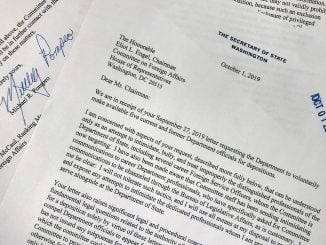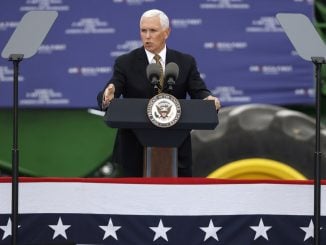
They sit, one after another, the line stretching off into the horizon.
They are the trucks, waiting to leave the Ukraine.
Immediately after clearing customs and entering the country, the first impression of the Ukraine is the unfathomable number of people trying to get out. The right lane of the eastbound highway is clogged with 18-wheeler semi trucks, waiting to get their loads approved to depart.

The wait is a long one. In the early days of the way, an estimated 12,000 trucks were lined up at the borders. The number has gone down, but it appears not by much. The wait is currently more than a week, all spent in highway gridlock, in what gives new meaning to the phrase “slow lane.”
A shirtless driver squats by his rig, heating something on a small camping stove. Another driver, clad only in boxers, uses a hose attached behind his cab to take a roadside shower. Small groups of truckers cluster, talking, smoking and glaring at the cars that speed by for a much shorter date with customs.
There are several reasons for the unfathomably long line—a desire to leave for safer territory is an obvious one, as is the lack of other ways to transport commercial goods. The port only recently reopened and there is a similar line of trucks approaching the Black Sea commercial docks. Train service has also been interrupted for periods of time during the war, meaning that spending a week or more showering by the roadside is actually the fastest way to get goods to market.
Drivers also complain of the bureaucracy—with customs asking for documentation that has never been requested before.
For the first 16 miles, our view of the Ukrainian countryside is blocked by the neverending parade of parked trucks. It rolls through towns, over hills and into valleys. Our directions have us turn left onto a new highway, and the line comes with us, rolling more than 30 km into the Ukraine. That’s more than 18 miles of bumper-to-bumper traffic.
Once we pass the trucks and get an unobstructed view, Ukraine is a sight to behold. Its rolling hills and bright palette of colors is breathtaking. Yellow fields set against a bright blue sky remove any doubt as to how the country chose the colors for its flag. Crops are alternated with equally bright fields of sunflowers.
The villages are marked with giant blue and white displays that look more like the base of an Olympic torch than a “Welcome to Chernivtski” sign.
The architecture is quirky and endearing, looking like something out of a fairy tale or early Disney movie. It all stands in stark contrast to Romania—where everything seems to have been built in the 60s (either 12—or 19—as castles and churches share space with Iron Curtain era industrial buildings) and the country is famous for its dark grey history as home to vampires.
Ukrainian orthodox churches dot the landscape, with their bright blue bases and gold domes shining in the sun.
It makes it hard to believe that the country is being invaded. Dwarves and woodsmen should live here, not foreign troops.
The convoy used to cut through Moldova, a straighter line from Romania to Ukraine, but the direct route proved to be inconvenient.
“It’s shorter,” says team leader Shannon, but it’s not faster.
He vaguely explains that the border “can be tough.”
Another longtime driver, Daniel, adds some detail.
“They’re jerks,” he says.
In addition to making the crossing difficult, Moldovan customs apparently has been known to collect an additional “tax” for using the roads in their country—a tax that, without pointing fingers, many drivers seem skeptical actually finds its way into government coffers.
So it’s easier to add a few miles to the journey and loop around Moldova.
“If I never got back to Moldova,” Shannon says, words loosened by Daniel’s bluntness, “that would be fine.”
We reach our safe house (my term—they merely call it “the apartment”) in the early evening in an area of the country that the drivers refer to as “relatively safe.”
“There’s no fighting going on here,” Shannon says, “but last week, I stood on the balcony and watched them fire anti-aircraft rockets for about a half hour.”
The night is punctuated by sounds of thunder, off in the distance, even though no storms are in the forecast. When the air raid sirens begin sounding late at night, the true source of the thunder is made clear.
At least here, in the “relatively safe” area, the war is treated like a severe storm warning back in the states. There are alerts and rumbles on the horizon, but for the most part, people go on with their lives.
We will drive another two and a half hours tomorrow, and things, I’m told, will be different. But for tonight, I sleep under covers, in a bed, trying not to think of the truck drivers by a desolate stretch of road behind me, or what waits ahead.



